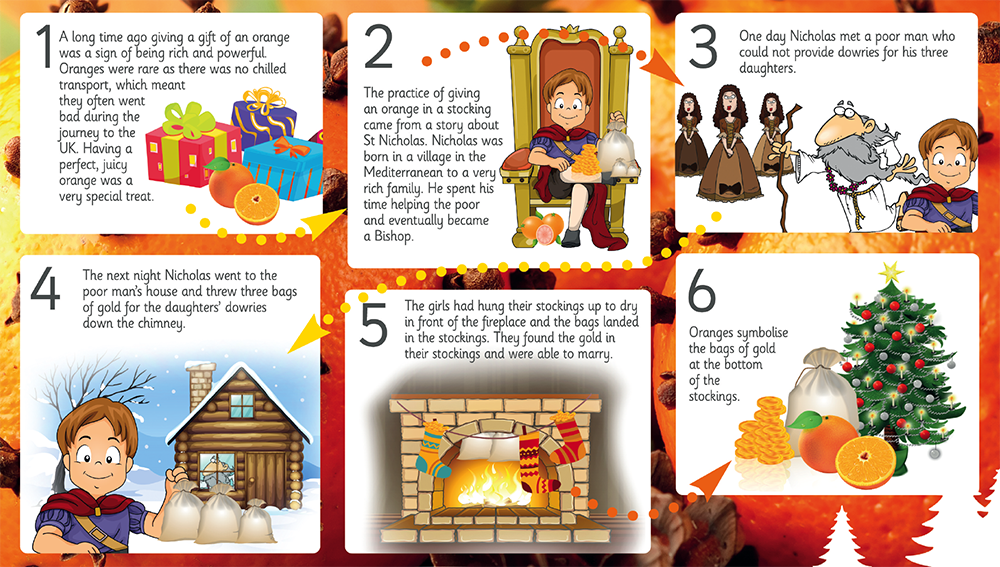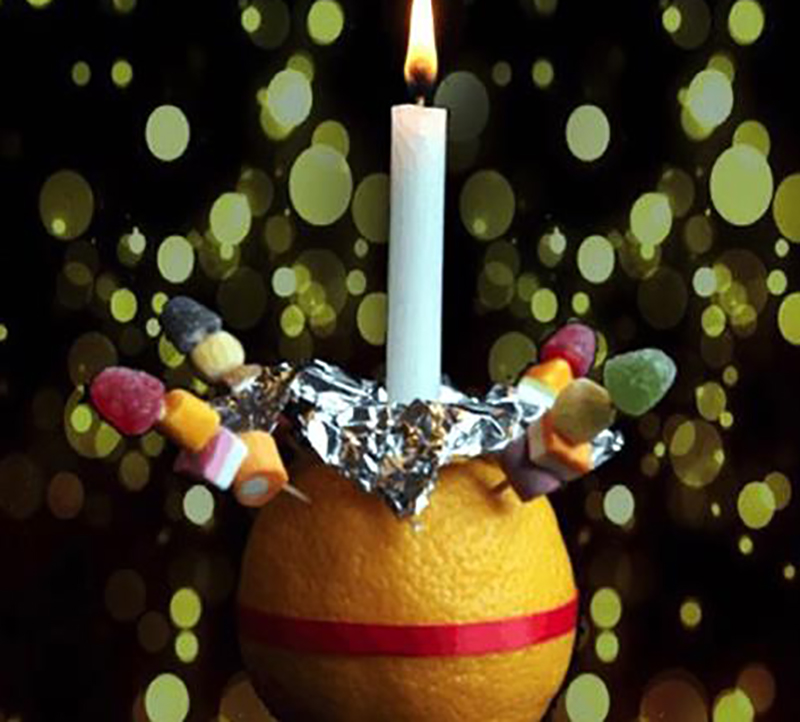Introduce children to the story all about oranges, by telling them that traditionally, Father Christmas leaves an orange in a child’s stocking when he comes to visit on Christmas Eve.
Have a selection of oranges for children to see and taste.
A long time ago (14th – 18th century) giving a gift of an orange was a sign of being rich and powerful. Oranges were rare as there was no chilled transport, which meant they often went bad during the journey to the UK.
Having a juicy perfect orange was a very special treat. The practice of giving an orange in a stocking came from a story about St Nicholas. Nicholas was born in a village in the Mediterranean and his family was very rich. He spent his time helping the poor and eventually became a Bishop.
One day Nicholas met a poor man who could not provide a dowry for his three daughters. Ask the children if they know what a dowry is. (The tradition of parents providing money on the marriage of a daughter.) The next night Nicholas went to the poor man’s house and threw three bags of gold for the daughter’s dowries down the chimney.
The girls had hung their stockings up to dry in front of the fireplace and the bags landed in the stockings. They found the gold in their stockings and were able to marry. Oranges symbolise the bags of gold at the bottom of the stockings.
Activity – How to make a Christingle
Children often make a Christingle – but what does it mean?
Christingles are lit during a church service. They are made from an orange decorated with red tape, sweets and a candle.
The Christingle service is an opportunity to bring your whole community together, to share the Christian story and to experience the joy and wonder of this well-loved Christmas tradition. Some schools make Christingles in school and then take them to the local church for a service.
The symbolism of Christingle
Each element of a Christingle has a special meaning and helps to tell the Christian story:
- The orange represents the world.
- The red ribbon (or tape) symbolises the love and blood of Christ.
- The sweets and dried fruit represent all of God’s creations – including the 4 seasons. The four sticks can also be seen as North, South, East and West – representing the whole world.
- The lit candle represents Jesus’s light in the world, bringing hope to people living in darkness.
You will need:
- A large orange
- A small candle
- Red ribbon or washi tape – long enough to go around the middle of your orange
- 4 cocktail sticks
- Raisins, cranberries, sultanas
- A small piece of foil (to catch wax dripping from your candle)
- A pencil to make a hole in the top of your orange
- Sticky tape to secure the ribbon on your orange – if not using washi tape.
Instructions:
- Measure the red ribbon around the middle of your orange and cut to the right length, allow a little overlap.
- Stick your ribbon or washi tape to the orange – if using ribbon, use a piece of tape or a small pin.
- Make a small hole in the top of the orange.
- Skewer the dried fruit onto the four cocktail sticks (share them equally).
- Put the cocktail sticks around the orange just above the middle at North, South, East and West.
- Cover the hole at the top of the orange with a small piece of foil.
- Place the candle in the orange.
- Light your candle when you are ready to use it.
N.B Children need to be supervised when lighting candles. Ensure hair is tied back. Cocktail sticks are sharp – adult supervision is required.





